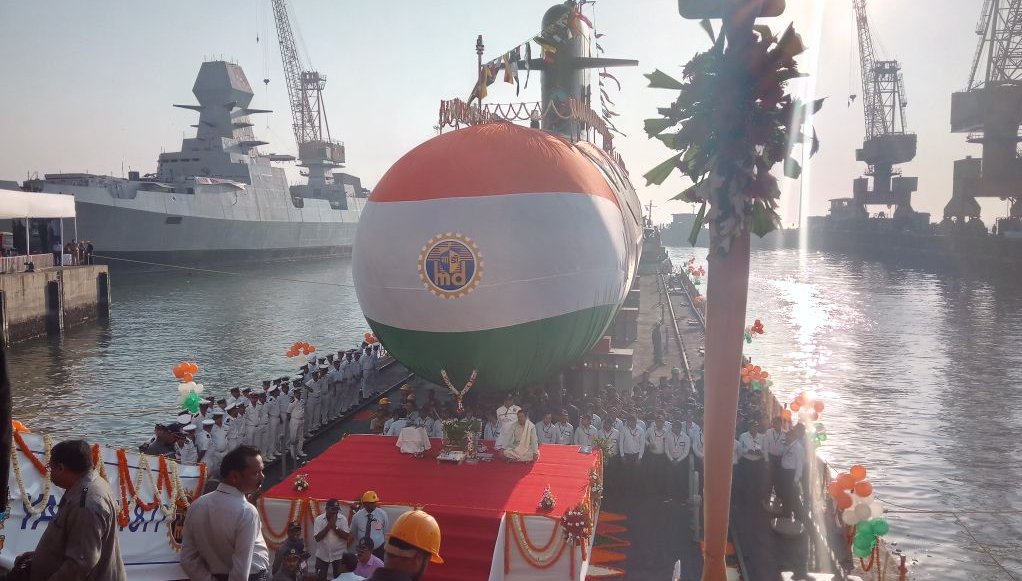India’s third Scorpene class submarine, ‘Karanj’, being built under license by the Mazagon Dock Shipbuilders Limited (MDL) for the Indian Navy (IN), was launched earlier today. As we have analysed before, India’s diesel-electric submarine build capabilities have been revived via the Scorpene Class license build program, and the launch of the Karanj serves to further underline this fact.
After being brought out in a submarine launch pontoon from drydock, Karanj was then towed to Mumbai Port Trust, where it was allowed to slip into the water. Karanj will now undergo rigorous trials and tests, both in harbour and at sea before it is commissioned into the IN. As such, Karanj is the third in a series of six Scorpene Class submarines being built by MDL in collaboration with France’s Naval Group (formerly DCNS) .
On the occasion of Karanj’s launch, Chief of Naval Staff (CNS), Indian Navy, Admiral Sunil Lanba, said that the ‘launch of Karanj marked a significant departure from the manning and training philosophy that was adopted for the first two submarines‘ and added that ‘from the third submarine onwards the Navy would be fully self reliant in training and certification processes‘.’He also mentioned that the old ‘Karanj had served the nation for 34 years from 1969 to 2003 including participation in 1971 war.’
According to India’s Ministry of Defence (MoD):
‘The state-of- the-art technology utilised for construction of the Scorpene class submarines has ensured superior stealth features such as advanced acoustic silencing techniques, low radiated noise levels, hydro-dynamically optimized shape and the ability to launch a crippling attack on the enemy using precision guided weapons. The attack can be launched with both torpedoes and tube launched anti-ship missiles, whilst underwater or on surface. The stealth of this potent platform is enhanced by the special attention given to various signatures. These stealth features give it an invulnerability, unmatched by most submarines.’ Incidentally, all of this has been analysed in detail by DDR here.
India’s MoD further states:
‘Scorpene submarines can undertake multifarious types of missions i.e Anti-Surface warfare, Anti-Submarine warfare, intelligence gathering, mine laying, area surveillance etc. The submarine is designed to operate in all theatres, with means provided to ensure interoperability with other components of a Naval Task Force. It is a potent platform, marking a generational shift in submarine operations.’
Last year, on 14 December 2017, INS Kalvari, the first Scorpene class submarine was commissioned into the Indian Navy and Khanderi, the second Scorpene class submarine which was launched in January 2017, is currently undergoing a rigorous phase of sea trials and is scheduled to be commissioned into the IN soon.
© Delhi Defence Review. Reproducing this content in full without permission is prohibited.
































